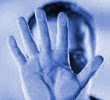| Medium : for amateurs |
« Eternity is really long, especially near the end. »
Woody Allen (1935 - )
 |
| The lemniscate, symbol of infinity Source favim.com |
As surprising as it may seem, the answer lies not in philosophy, but really in mathematics.
We will see that it is possible to define infinity in a rigorous and coherent manner.
There even exists numerous different infinities : precisely an infinity of them !
Three separate notions of infinity play a major role in mathematics :
The ordinal infinity, defined as a number greater than any natural number, the cardinal infinity as the number of elements of an infinite set, and the infinity used in calculus and especially limits as an unreachable element.
However, the latter of the three is misleading, being more representative of the concept of unboundedness than that of infinity, as was explained to us by Riemann and Einstein.
Of course it doesn't stop there, and the mathematicians' imagination can give us a lot more definitions of infinity, which shows us how limitless the human mind can be.




